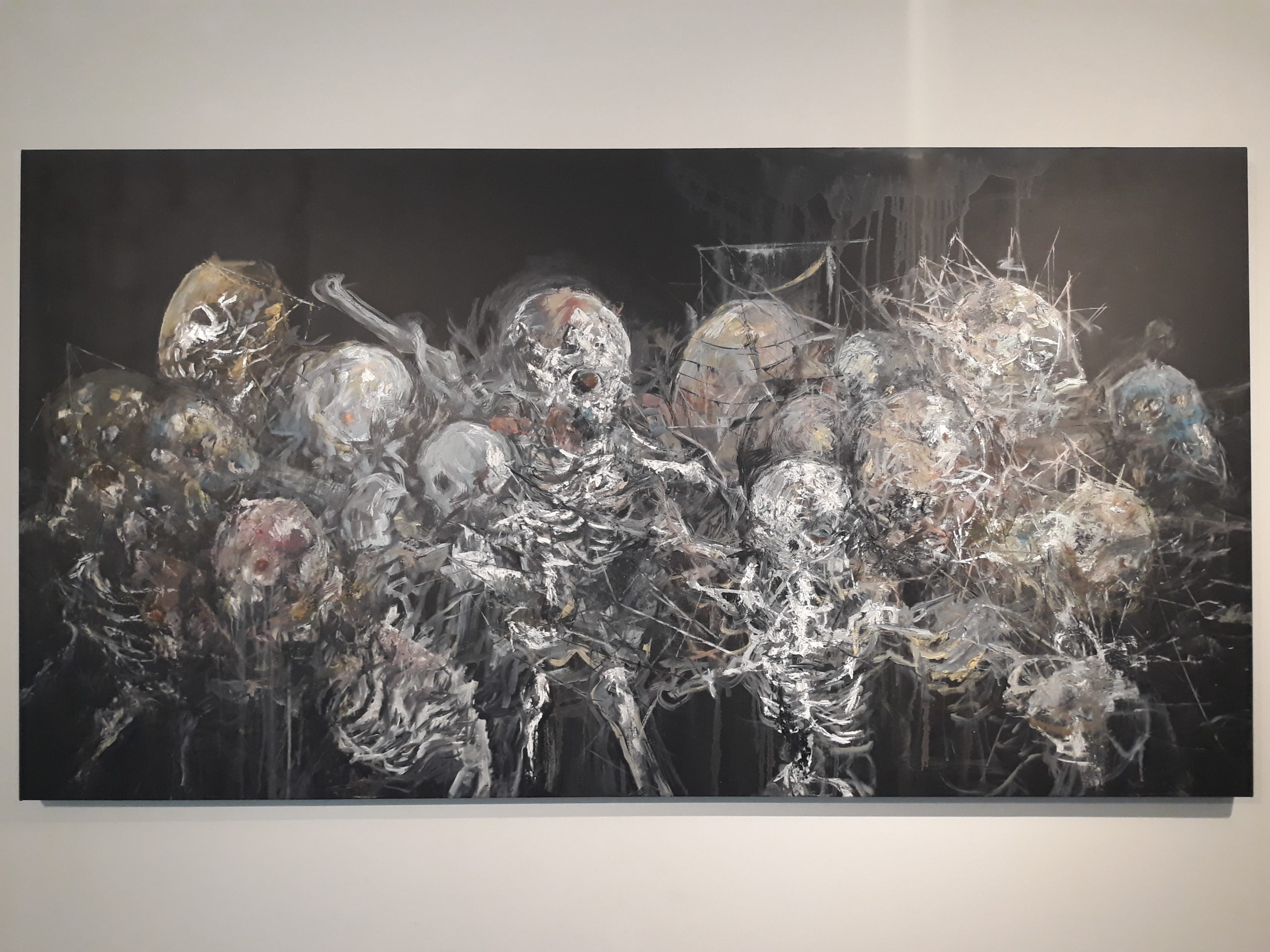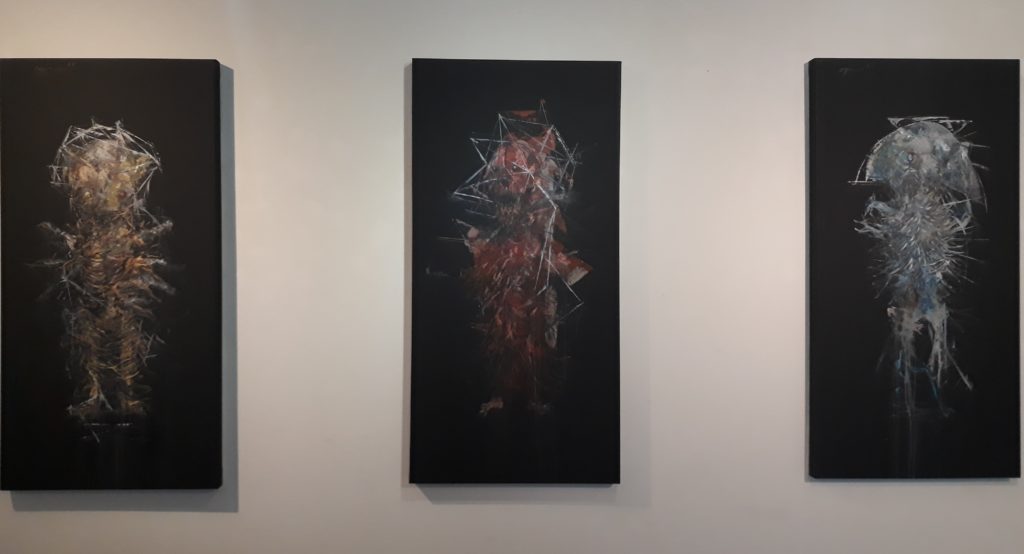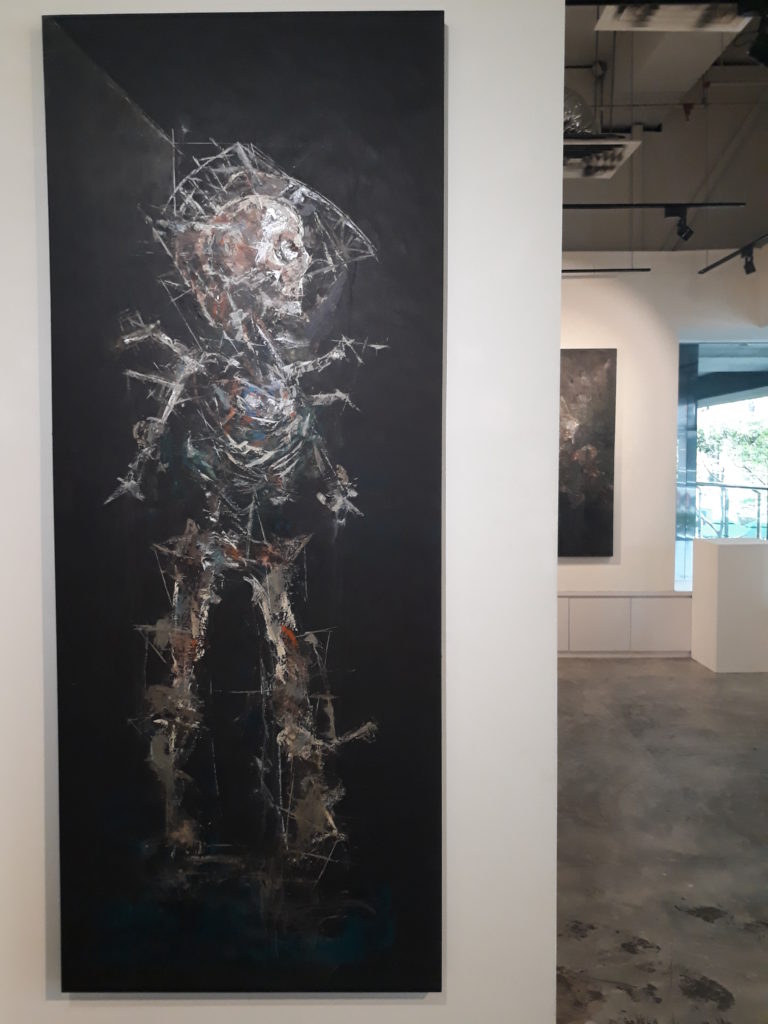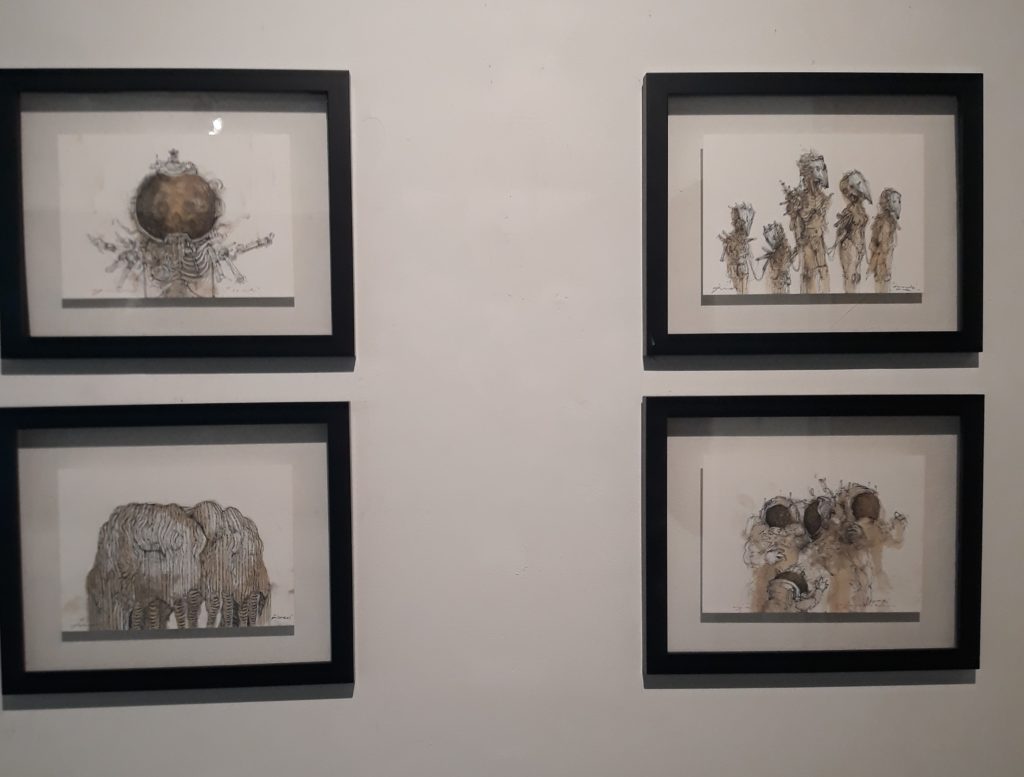
By WAI LU YIN
A dystopia is an imagined society in which there is great suffering caused by current trends, societal norms and the implementation of a totalitarian system. We seem to be in a similar state right now, thanks to the COVID-19 pandemic, as we struggle to be present in virtual meetings and multitask during the long working hours, all while trying to maintain our well-being. We strive to feel a sense of belonging in groups and spaces. Still, we are pressured to adapt to the new normal and break away from what we used to be, falling into dire straits in terms of financial support, physical strength and mental health.
Ajim’s latest work, Dystopians, draws the relationship between limitations of space and the state of mind in an unnamed society. Two different forms of his works (acrylic on canvas and ink and coffee on paper) were displayed at the Artemis Art Gallery and Vinyl on Vinyl.
He started with painting each character onto different parts of the canvas and paper. He then crammed the characters together by putting lines and strokes onto them. The complexity of the combination evokes a sense of emptiness in crowded spaces and in pursuing our individual paths.

The “Anak” series, painted with three primary colours representing distinct personalities, reflects on the parents’ role in supporting the younger generation. Parents face a lot of responsibilities in raising families, as they continue their family lineages and ensure their children are on the right path. Yet, at the same time, they have trouble understanding their children’s thoughts and emotions and can’t communicate with them, instead leaving them attached to their mobile devices. These situations remind me of the documentary The Social Dilemma which shows how social media deeply affects a person’s mind through forced advertisements and misinformation.
“Dystopians: Himpit”, a visual adaptation of Metro Manila during Ajim’s first visit in early 2019, makes me feel confined in a tight space as I recall my experience taking public transport and being crammed in with commuters during peak hours. While commuting, we often observe people within our surroundings, lost in our deep thoughts until we reach our destinations. The overlapping lines and strokes embody the interactions with the crowd, the different individual directions and the notion of fear in narrow spaces. During this unprecedented COVID-19 time, we rely on technology for virtual calls and meetings while staying at home. Whether we are in the company of others, or alone, the atmosphere and crowded spaces trigger a desire to fill up our emptiness.

Looking at “Dystopians: Nakhoda”, I question the ideas of ‘me’ and ‘us’ as being mutually exclusive in today’s society. Through Ajim’s daily observations, experiences and relationships, he puts out the visual stories through characters that represent an extension of ourselves, taking us into self-reflection. The word nakhoda (captain or master in Malay) makes me ponder what it means to be a great leader and how to lead a good life. As individuals, we struggle to better ourselves in various circumstances and through experiences, at different paces.

Besides acrylic on canvas, Ajim challenges himself in conveying his observations through different mediums. His series of works, drawn with coffee and ink on paper, depicts rustic-looking characters from different worlds. Each piece has a couple of words written on the back. The detailed lines and different tones of brown heighten the depth of the characters’ personalities and their relationship to people. His technique evokes a pre-technology ‘analogue’ feeling and experience, when we used to write and draw our thoughts on paper. Getting a dose of nostalgia by recalling good times while browsing old collections of photos and journals can help reduce COVID-19 fatigue.
Dystopians is a visual message that encourages us to embrace our relationship with thoughts and spaces in the essence of time, treating them as visitors and friends. Each work highlights how we mediate our state of mind while adapting ourselves to technology in a fast-paced society. Using technology enables us to get information and connect with people but it creates distractions and barriers within spaces. Ajim’s observations and creative process for Dystopians are similar to our own experiences when we put thoughts on paper and keep them as stories and memories.
With borders closed during the Movement Control Order, being alone at home allows us to have ‘me’ time’ – time to self-reflect, learn new skills and reconnect with memories through old items. As individuals, we know ourselves better than others do and we can hold longer conversations with our minds, so it is okay to be alone. However, the longer we stay alone, the more anxious we become, creating a longing to fill up the emptiness inside. These scenarios impact our stream of thoughts. In an unprecedented new normal, we are not alone as we overcome the challenges together and do what we can for society while hoping for the pandemic to soon come to an end.
Ajim Juxta’s solo exhibition ‘Dystopians’ took place from Sep 26 to Oct 27, 2020 at Artemis Art Gallery in Publika, Kuala Lumpur.
Wai Lu Yin is a participant of the CENDANA-ASWARA Arts Writing Mentorship Programme 2020-2021.
